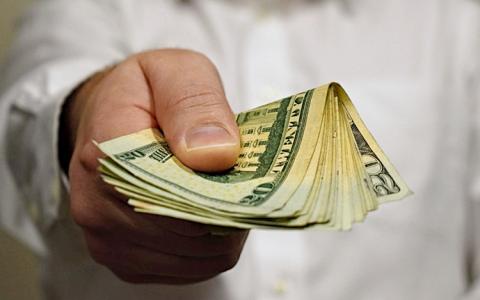
With a new $1.9 trillion coronavirus relief bill calling for a third stimulus check of $1,400 for millions of Americans, qualified individuals and households are eagerly awaiting its rollout. That relief comes on the heels of a $900 billion coronavirus stimulus bill passed in December 2020, which included $600 stimulus payment aid and additional unemployment relief.
Many aspects of personal finance may top of mind for many Americans as they expect their third stimulus check. Here are some recommendations from financial experts, including exploring a high-yield savings account.
First, your clients probably need to make sure what they're getting and when it will arrive. The IRS now has a system in place to provide answers. You can access it HERE or alert your clients to where it is.
Any "liquidity event," even a small one, is great to capture on behalf of your clients. If you have 30 clients and each gets about $1,000, that's $30,000 in potential "free AUM" that you can deploy on their behalf.
Just roll it straight into the portfolio.
For their less affluent children and other relatives, a hierarchy of personal finance needs exists. Sadly, the following list is not prioritized in this way . . . all financial planners know to pay down debt before building a zero-rate cash account, for example, and that emergency liquidity outweighs speculative long-term investments.
Park the cash in a high-yield savings account
“For the average American, a high-yield savings account is the best way to invest a stimulus check,” said Nicole Kubin, founder of Strategic Divorce Advisory, a New York City-based financial consulting firm. “They're safe, there's no chance involved and they provide immediate liquidity. Plus, they’ll keep you from using these proceeds for lifestyle spending.”
High-yield savings accounts offer some protection when investors need it most. “Investing in a high-yield online savings account will provide a low-volatility investment and earn money that’s available to pay future bills,” said Greg Klingler, director of wealth management at the Government Employees’ Benefit Association, in Odenton, Maryland.
Visit Credible and learn how you can earn more cash with multiple high-yield savings options – all designed to help you save money.
Invest in the stock market
Klingler is advising his clients to review current stock market conditions and find stocks that pay off in the long-term.
“Strong companies with great long-term prospects may be available with heavily-reduced prices due to reduced 2020 earnings outlooks,” Klingler said. “In addition, the Federal Reserve’s recent emergency rate cut to near zero and additional economic stimulus measures should help steady the stock market in the near future.”
Build an emergency fund
Beyond investing in the market, Klingler advises either starting or fortifying an emergency fund. “Recent data suggest that many of us would be unprepared for an unexpected financial shock,” he said. “For instance, the median American is defined as living paycheck to paycheck, and only able to cover basic living expenses for just eight days and 47% of Americans would struggle to immediately produce $400 to pay an unexpected bill."
A good baseline for an emergency fund is three-to-six months of expenses in liquid cash. “Personalizing or naming the fund can help motivate you to contribute to your emergency fund and resist the temptation to withdraw from it,” Klingler said.
If you're ready to build an emergency fund, visit Credible for high-yield savings accounts to save more money now.
Spread the money around
The best way to invest your check depends on what you want to do with the money.
“If it's in a retirement or an account for your long-term goals then consider an exchange-traded fund that provides broad exposure to stocks, bonds and real estate,” said Joseph Hogue, a former Wall Street analyst and founder of the Let's Talk Money channel on YouTube. “If you're likely to need that money within the next year then steer it to something safer like a short-term bond fund or gold.”
Investors who already invest regularly can take a little more risk with this 'extra' money. “Consider breaking it up into higher-risk, higher-return investments like cryptocurrencies or even penny stocks,” Hogue said
But, if this option is too risky for your personal finance situation, a safe bet could be a high-yield savings account. To see how high-yield savings accounts can save you money, check out these high-yield savings options via the Credible marketplace to save extra cash.
Invest in your financial future by paying down debt
If you’re carrying credit card debt, work on paying off that debt to garner a better financial return.
“If your credit utilization rate is above 30%, your credit score suffers,” said Karen Condor, a finance analyst with USInsuranceAgents.com, an insurance services platform. “If your stimulus check can’t stretch enough to cut your debt substantially, at least pay more than the minimum debt on your credit cards.”
If you're struggling with multiple high-interest credit card debts, consider taking out a debt consolidation loan. Visit Credible to compare personal loan lenders and rates.
The takeaway on investing your stimulus check
Some households will need stimulus cash to cover household bills and restock necessities. But if you can manage it, investing the money in a high-yield account or another investment vehicle can put that money to work for you – and help you earn more money going forward.
No matter how much money you get in your stimulus check, you can save extra cash with high-yield savings options from Credible.
This article originally appeared on Fox Business.



